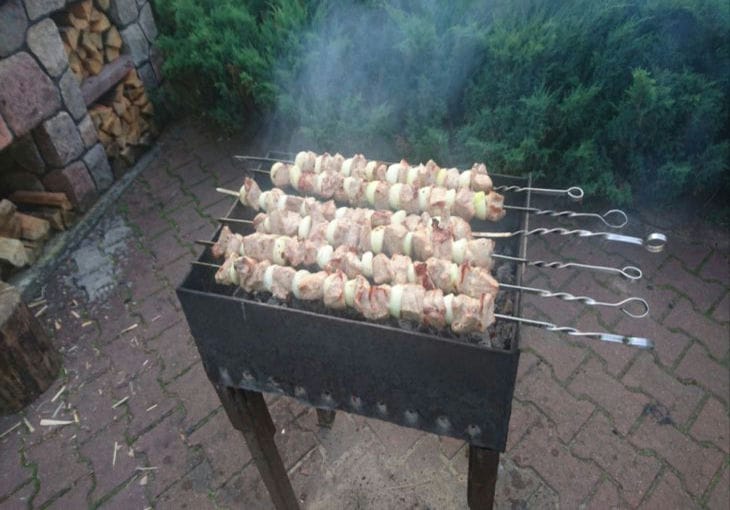The smell of roasting meat marinated in spices and the aromatic smell of burnt logs usually has a mesmerizing effect, drawing in the minds of most people pictures of various places and landscapes where each of us, at least once, while relaxing, combined our rest with the preparation and consumption of such a magnificent dish as shashlik.
Nowadays, shashlik is the name given to anything that is skewered and cooked over hot coals.
That is, imagination and certain preferences help people both to create whole assortments from various products and to use products that were not previously used in shashlik - fish, poultry, offal, vegetables and even fruits.
But today we will talk about the classic version of shashlik, which is prepared using different types of meat.
About what kind of meat is best suited for its preparation, about the nuances of marinating and cooking.

Choosing the right meat. Pork and lamb are the most popular types of meat from domestic animals for making shashlik, although beef is also preferred by many people.
Despite the fact that the shashlik made from it is not so soft, and the preparatory process - marinating - takes a lot of time.
When buying meat, it is best to choose certain parts of the pig, lamb or cow carcass that are best for making shashlik.
The best pork meat is the neck. This is the back part of the neck, located along the spine. The meat from the neck is the most tender due to the even distribution of the fat layer.
During the frying process, the fat layer protects the meat from drying out too much, keeping it soft and juicy.
For shashlik, the main part of the lamb carcass used is the back part or meat from the ribs and spine, which, in principle, is always used together with the ribs when frying due to the small mass of meat on them.
The standard version of lamb shashlik is even listed on restaurant menus as "lamb on ribs." From the beef carcass, meat for shashlik is usually taken either from the inside of the hind leg or from the fillet.
Marinating meat for shashlik is a very responsible and important process after the selection, in which it is necessary to follow both the recipe and certain rules, or, more accurately, not to make certain mistakes.
You should not marinate meat in wooden or aluminum dishes. Wood has the ability to absorb moisture, and the shashlik may lose its juiciness, and aluminum, when in contact with meat, under the influence of the acids it contains, begins to release carcinogenic substances.
It is best to marinate meat in glass or enameled dishes. It is necessary to lay out meat and other ingredients for marinating in the dishes in layers, for the best impregnation. And for the same purpose, you can press the marinated meat with a weight, from this the impregnation occurs even more intensively.
In order for the meat you choose to turn into that very aromatic and delicious shashlik during the frying process, it is necessary to observe several simple but very important points. This is, of course, the selection of the right fuel on which the shashlik will be cooked.
A large number of people, not aware of all the intricacies of cooking shashlik, believe that any type of wood charcoal is suitable for this process.
And some even manage to use painted boards, not realizing that meat absorbs all the harmful substances contained in the paints, and through their ignorance, they voluntarily harm their health.
The best wood for charcoal is fruit trees. Cherry or apple charcoal will give the shashlik an indescribable aromatic smell and taste.
And one more essential condition for proper preparation is that the firewood must be completely burnt out, that is, there should only be coals in the grill.
Shashlik fried on unburned wood almost always turns out burnt on the outside and raw on the inside. If you follow these fairly simple rules, even a novice cook can make shashlik worthy of admiration.
Earlier we talked about making soup from young nettles .








